

Bonanza
Altering the perception of second-hand and empowering communities to re-use furniture that would otherwise be wasted.

ABOUT THIS PROJECT
Team: Andrea Fischer and Mariana Pedrosa
Date: October – December 2015, 06 weeks (full – time)
THE CHALLENGE
We live in throwaway society, and it doesn’t come as a surprise that in the UK we throw away around 672,000 tonnes of furniture every year. This doesn’t sound like particularly much, but if you think about it, this means that a great amount of trees, water, energy, and human resources have been in vain. Out of all the household furniture that is produced or imported into the UK, only 17% gets re- used.
This led us to ask the question: why does so little furniture and resources get re-used? If roughly 17% of furniture is being re-used, that means that the other 83% is wasted in incinerators or landfill.
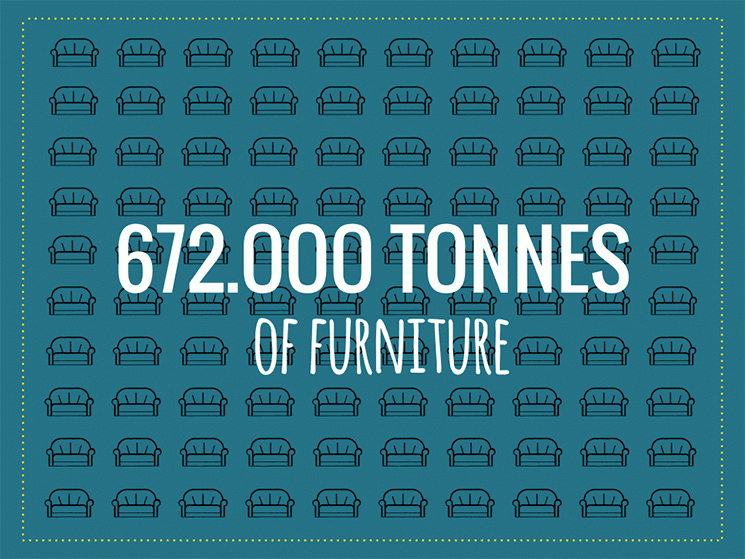
THE DESIGN PROCESS
Extensive research was undertaken to understand why people throw away things so easily, and we visited recycling centres, charities, furniture remanufactures, and talked to designers, craftspeople, consumers and start-up companies.
People have a limited line of visibility in terms of where things come from and where they go to. If we look at the high level user journey (consider – buy – use – dispose), for someone considering buying a new piece of furniture, then this is an opportunity to create value at the intersection of disposing and considering; ‘One man’s waste is another man’s gold’.


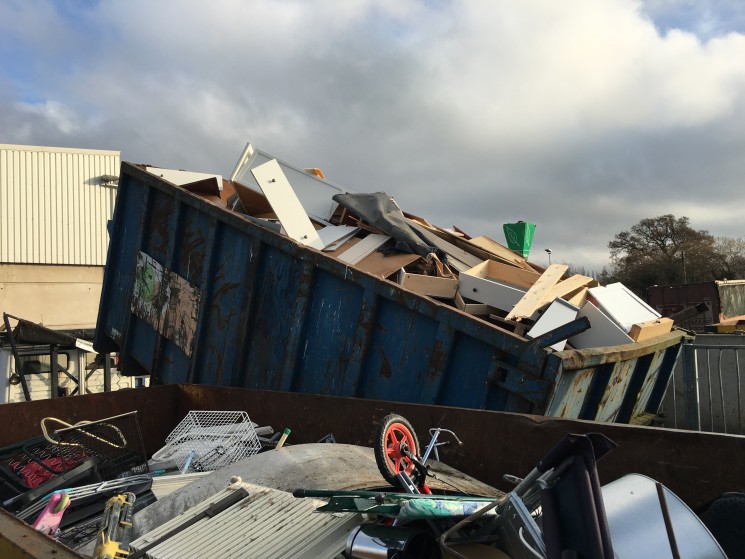
From our research:
1. We understand that second-hand is not very popular amongst the greater population, and second-hand furniture is associated with preconceptions, such as: “it’s unhygienic”; “it’s of lower value”; and “I don’t know who used it before, I can’t be sure of its condition” .
2. In addition, we looked at what second-hand furniture is available; it’s either very expensive, antique-like, or very cheap, in the form of charities. The first option limits access to most people, as just a small percentage of the population will ever afford a £2000 table.
3. As humans, we always aspire to have the best for ourselves. This is why we like new things, and we like brands that give us the lifestyle we aspire to. So companies like IKEA, are very clever in presenting their products in this way, because everyone can dream of living in a space like this. Contrast this with this how furniture is presented by charities, and maybe we begin to understand the pre-conceptions attached to second-hand.
Our conclusion: There are no aesthetically pleasing and economically valuable proposals for re-using furniture, consequently, design could be a big differentiator.
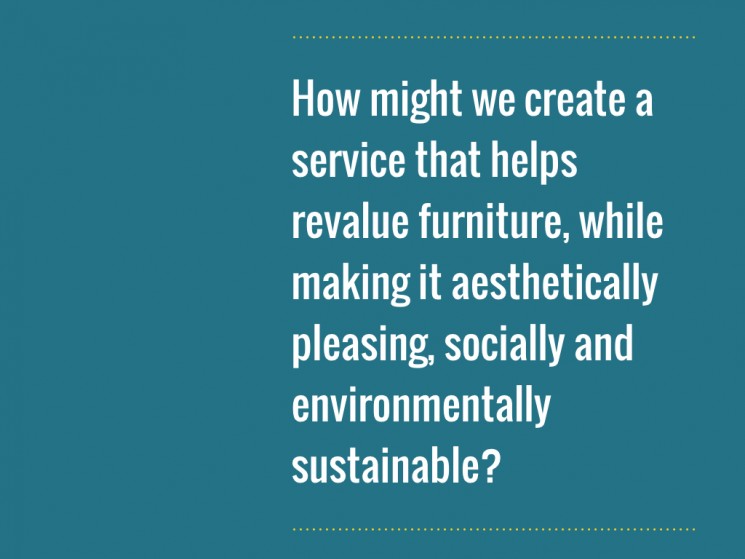
As part of our project we decided to run a small experiment in order to understand the feasibility of such a concept, and also to see what people would say if we turned second-hand into something desirable.
We received a very good response. Practically everyone who saw our proposal liked it, and we were often asked if we were selling the furniture.
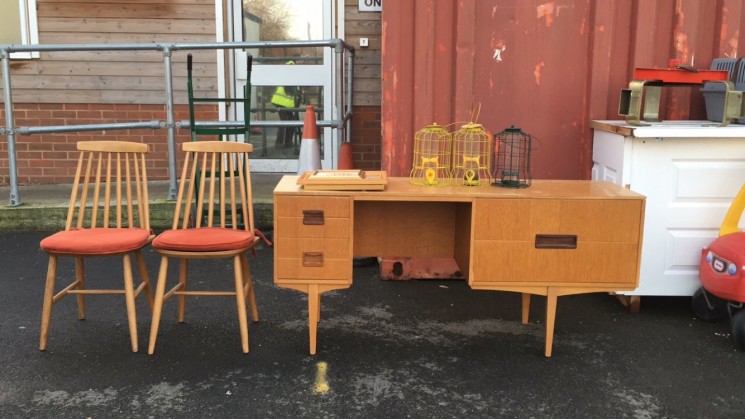
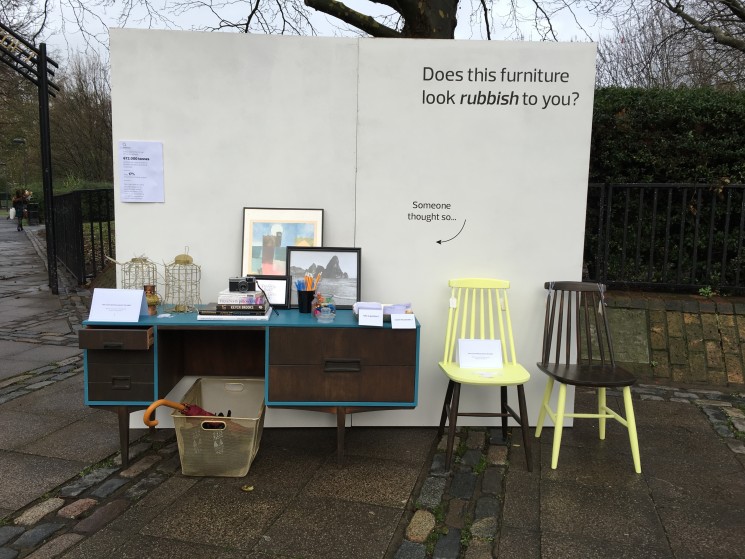
THE OUTCOME
Bonanza is a social enterprise that takes furniture destined for landfill and up-cycles it, disrupting the perception of second-hand while curating spaces where it is currently badly displayed (charities) or could potentially be positioned (homes).
As opposed to charities, the refurbished furniture is presented as part of a holistic design concept, creating a proposal for a lifestyle. We envision design to be the key differentiator, both in terms of products and service. Our concept aims at making second-hand furniture sexy again; it is all about ‘up-cycling’ furniture that would have otherwise ended up in landfill.
We are not a technologically driven start-up, but rather a social enterprise that aims to make an impact at the consumer/human level. Basically, what we want to provoke is a shift from a CONSUMER to a USER.
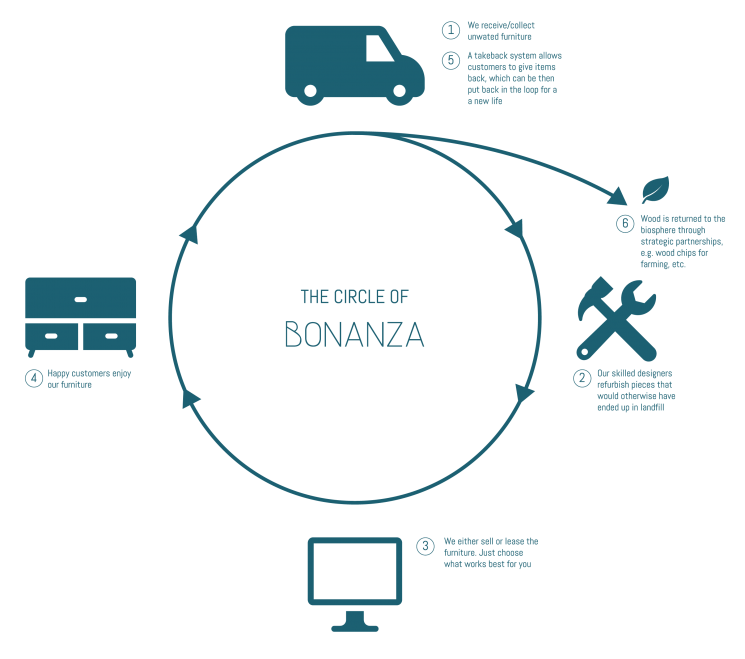
Want to see more?
Go back to projects page© 2024 Mariana Pedrosa
Designed by Estúdio Visio